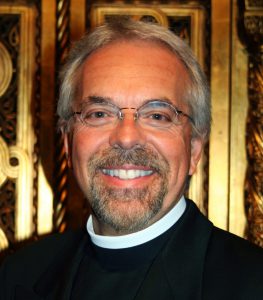
Fr Frank Marangos
Source: OINOS Educational Consulting
By Frank Marangos, D.Min., Ed.D., FCEP
The wisdom of God is sleeping in many of our nation’s seminaries and theological schools. While economic volatility, global aggression, terrorism, utilitarianism, and relational dysfunction grips contemporary society, the priceless insights of Christian spirituality are often missing from the marketplace of ideas. All that is required to invigorate the spiritual malaise are mature religious leaders, imbued with the “wisdom from above” (James 3:17), who are able and willing to courageously steward God’s elegant Truths in their respective contexts.
Part Two of Transfiguring Theological Educationwill examine the first General Standard of the Commission on Accreditation of the Association of Theological Schools, namely, Purpose, Planning and Evaluation. In particular, this essay will discuss how the process of institutional evaluation can be employed by educational leaders who, undaunted by fiscal, administrative, and pedagogical challenges, are also interested in discerning effective ways to “wake” the quiescent wisdom slumbering in the suppositional repositories of their institutions of higher theological education.
On August 4th, two days before the liturgical commemoration of our Lord’s Holy Transfiguration, the Orthodox and Catholic Churches celebrate the memory of the Seven Youths of Ephesus, a legendary group of young persecuted Christians who were sealed inside a cave in Asia Minor in the third century A.D. emerging years later following a miraculous slumber. According to Christian accounts, in order to escape the persecution of Emperor Decius (249-251), seven young soldiers or “Sleepers,” as they are referred to in Islamic tradition, hid themselves in a cave near Ephesus. Learning where the men were hiding, the emperor ordered the entrance of the hollow secured with heavy boulders.
Nearly two centuries later (184 years), construction workers unsealed the grotto’s opening and discovered the un-decayed bodies of the sleeping soldiers. Once awakened, the spiritual witness of these young companions confirmed the doctrine of the resurrection which was, at the time, being assailed by heretics. An Orthodox Christian hymn sung during the commemoration of the event describes the Seven Youths as “equal in number to the pillars of God’s Wisdom.” By “their words,” the Canticle exhorts, the youths should be praised “for crushing the ungodly teaching of the tyrants as with stones.”
What are the “seven pillars of Wisdom” that sleep in many of our nation’s seminaries and theological schools? And, what are the barriers that prevent this deposit from effectively reaching contemporary contexts? While the “boulders” of financial, administrative, and andragogical challenges are passionately debated, school leaders should also resolve the preeminent ways of advancing the mission of their indispensable enterprise, namely, the formation of religious leaders that posses the intellectual precision and exhibit the wisdom-based vitalities required to transfigure society. In order to do so, however, theological schools and seminaries must evaluate if their foundational capacities are firmly established on Wisdom’s sure footings.
As communities of faith and learning, guided by a theological vision, theological schools are encouraged by the Commission on Accreditation for the Association of Theological Schools (ATS) “to conduct ongoing institutional planning and evaluation of outcomes to assure faithful implementation of the school’s purpose, priorities, and denominational and theological commitments.” According to ATS, the overarching goal of its member schools “is the development of theological understanding, that is, aptitude for theological reflection and wisdom pertaining to a responsible life in faith.”
Effective theological schools are, therefore, distinguished for fostering a culture that encourages ongoing evaluation of their denominational commitments and theological aptitudes of reflection, understanding, and wisdom. Only by honestly assessing these vitalities can educational institutions reliably determine if, in fact, the propensity for wisdom is effectively being formed in their graduates. A such, ATS recommends comprehensive evaluation as the primary method that an institution of theological higher learning can use to determine the extent to which it is achieving its primary purpose, priorities, and goals.
In their book, Educational Assessment of Students(2018), Anthony Nitko and Susan Brookhart define institutional school assessment as “a process for obtaining information that is used for making decisions about students, curricula, programs, and educational policy.” Since excellent schools make decisions that are informed by constant and consistent assessment, Nitko and Brookhart encourage educational leaders and teachers to evaluate student results and design classroom assessment activities that provide the information necessary to make best decisions for their institutions.
The Standards of Accreditation, published by the Association of Theological Schools, adhere to Nitko and Brookhart’s definition by both outlining the minimal requirements for accreditation and identify qualities associated with good institutional practice. According to ATS, evaluation includes: (1) the identification of desired goals or outcomes for an educational program, or institutional service, or personnel performance, (2) a system of gathering quantitative or qualitative information related to the desired goals, (3) the assessment of the performance of the program, service, or person based on this information, and (4) the establishment of revised goals or activities based on the assessment.
According to first General Standard, “the scope of institutional evaluation includes, (1) the ability to fulfill the school’s mission, (2) the ability to provide the resources necessary to sustain and improve the school, and (3) the ability of governance and administrative structures, personnel, and procedures to exercise leadership adequately on behalf of the school’s purpose and to operate the school with integrity.” Unfortunately, the approach to theological education by the nation’s theological schools and seminaries is too often overly conceptual, cognitive, individualistic, competitive, and isolated from the Church and the local communities they were originally intended to serve. Studies have identified widespread tendencies of division between theory, practice and various theological disciplines. As a result, while impersonal intellectual precision may exist, the aptitude of pastoral wisdom sleeps.
If institutions of Christian theological education are interested in adhering to ATS’s overarching goal of forming graduates with “an aptitude for theological reflection and wisdom pertaining to a responsible life in faith,” a viable solution might include identifying “the wisdom from above” as the primary criteria for their respective institutional self-study and evaluations (James 3.15). In so doing, they will be able to more effectively develop and advance strategies that nurture an institutional “ethos” capable of integrating both contemplative and practical wisdom. Integration is not an attempt to maintain a balance between the academic, the spiritual, and the practical, as though things were done one at a time. Integration means bringing these aspects together into a whole and doing them at the same time. Rather than separating the disciplines of worship, academics, training, and experience, a wisdom-based praxis of formation could integrate them all. But, what exactly are the qualities of a wisdom-based praxis of formation?
The American Heritage Dictionary defines “wisdom” as “understanding of what is true, right, or lasting; common sense; good judgment; learning.” The word that is used for “wisdom” in both the Old and New Testaments carries with it the meaning of having a “skill in living, following God’s design and avoiding moral pitfalls.” The Bible Knowledge Commentary defines wisdom as “being skilled in godly living.”
Wisdom is a powerful quality and a theme occurring 41 times in the Old Testament Book of Proverbs. “Wisdom,” insists King Solomon, “is more precious than rubies, and nothing you desire can compare with her” (Proverbs 8:11). Emphasizing that the pursuit of wisdom is not simply speculative but involves the entire human person (mind, body and soul), Solomon, suggests that “Wisdom’s house is built on seven pillars” (Proverbs 9:1). The Old Testament King’s proverbial description is much more than a personification of God nature. On the contrary, subsequent biblical writers suggest that Solomon’s “seven pillars” refer to a list of spiritual vitalities, generally classified as (1) truth, (2) knowledge, (3) reverence, (4) counsel, (5) prudence, (6) justice, and (7) virtue.
Apart from Solomon’s seven “pillars” (Proverbs 7-8), an equal number of wisdom qualities are notably described by the Prophet Isaiah (Isaiah 11), the Apostle James (James 3:17), and Saint Peter (2 Peter 1:5-9) who seem to suggest that there are quantifiable components to the virtues that comprise wisdom-based praxis of spiritual formation. A purposeful order and relationship is evident in each catalogue of the qualities listed below.
Contemporary theological schools and seminaries would be well served to understand how to distinguish and integrate the transformative formation of both aspects of wisdom in the hearts, minds, and bodies of their students. Saint James describes contemplative wisdom as the spiritual capacity for discerning the right course of action between the inauguration and consummation of God’s eternal kingdom. The development of wisdom is a life-long process that edifies the faithful how to integrate inner mystical experiences with natural world contexts. Practical wisdom, on the other hand, is the social architecture for community formation. Accordingly, the Church should be noted as expressing the “meekness of wisdom” in patterns of speech and action that are “pure, peaceable, gentle, open to reason, full of mercy and good fruits, impartial, and sincere” (James 3.1-4.12).
The integration of contemplative and practical wisdom entails the exercise of various forms of Christian ministry. For the Apostle James, these include teaching (James 3.1), singing songs of praise (James 5.13), prayers for forgiveness and healing among the elders (James 5.13-15), the mutual confession of sins (James 5.16), and the restoration of sinners (James 5.19-20). In so doing, practical wisdom realizes the same end as contemplative wisdom, namely, the development of the individual and community into the image and likeness of God.
Apart from the Scriptural heritage, numerous patristic writings provide valuable insights to an understanding of the qualities of wisdom-based spiritual formation. An early prayer of Saint Augustine, a 4th Christian theologian and Bishop of Hippo in North Africa, whose writings influenced the development of Western Christianity, reflects this realization that humans follow a similar path of spiritual maturity that begins in darkness and moves toward wisdom. He explains, that “when we turn away from the changeless light of Wisdom, life is full of folly and wretchedness.”
Life’s fulfillment, Augustine insists, “consists in its turning to the changeless light of Wisdom.” As an early Christian hierarch, Augustine’s priority was ministry. His writings, therefore, are a direct result of his pastoral provision. Augustine, consequently, directs pastoral leaders to pursue wisdom through a seven-step praxis of formation: (1) fear; (2) piety, (3) knowledge, (4) resolution, (5) counsel, (6) purification of heart, and (7) wisdom. The process is cyclical and life-long. While each stage of Wisdom’s formation builds on the previous, the seventh quality leads back to the first.
The spiritual formation of theological students has been a major theme of discussion for theological educators in many parts of the world for many decades. For example, a 1989 World Council of Churches (WCC) publication defines spiritual formation as “the intentional processes by which the marks of an authentic Christian spirituality are formed and integrated . . . always God-centered and earth-based.” The Standards of the Association for Christian Theological Education in Africa ACTE include a similar recommendation. According to the ACTE, seminary and theological school educators must take “an active part in the life and worship of the institution, and a visible personal interest in the students and their welfare.” As such, their educational plans “must embrace a concern for the students’ spiritual as well as academic development.”
Like the WCC and ACTE, the International Council for Evangelical Theological Education (ICETE) exhorts theological schools and seminaries to “balance academic and nonacademic concerns.” Theological education, recommends the ICETE, should “combine spiritual and practical with academic objectives in one holistic integrated educational approach . . . to attend to the growth and equipping of the whole man of God by deliberately fostering the spiritual formation of the student.”
Recognizing the heavy emphasis on cognitive learning and answering the anti-intellectual suspicion toward the contemporary theological academy, the Association of Theological Schools has emphasized the need for member schools to advance strategies of personal and spiritual formation. In 2017, the ATS Educational Models and Practices in Theological Education project hosted a peer group forum in of more than 200 theological educators from 110 schools. Student “formation” for religious leadership was among the ten important issues addressed. The peer group agreed that together with intellectual and ministerial learning, more attention should be given to the personal and spiritual formation of students.
Sensitive to the contemporary critique of theological education, ATS sponsored the Readiness for Ministry Project (RfM) for the purpose of developing criteria for evaluating ministry preparation. Profiles of Ministry (PoM), was additionally added by ATS to help schools of theological learning evaluate not only the skills and competencies required for the beginning cleric, but also qualities of formation.
In a feature article published in their online periodical, Insights into Religion, ATS outlines 10 essential skills that will be required of the next generation of religious leaders in America. While some skills are time-tested, such as listening and collaborating, tomorrow’s religious leaders will also need to be entrepreneurial and communicate in new ways. The following table compares the PoM taxonomy of formation characteristics with the Association’s proposed list of 10 essential skills that future religious leaders will need to exhibit.
In his first medical best-seller, Awakenings (1990), author Oliver Sacks, dramatizes the remarkable “awakening” of Leonard Lowe, virtually a lifelong victim of a baffling 1920’s Encephalitis sleeping disease, later understood as a form of Parkinsonianism. In a semi-catatonic state since the age of eleven, Leonard is awakened by Doctor Malcolm Sayer, a young neurologist who refuses to accept the status quo of his now 41-year old patient and successfully treats him with L-dopa, an experimental drug-therapy.
While “awake,” Leonard has a lot to say to the “healthy,” especially on the topic of cherishing the ordinary life that most merely assume as normal and inevitable. “I feel saved,” Leonard remarks, “resurrected, re-born. I feel a sense of health amounting to Grace . . . I have been hungry and yearning all my life . . . and now I am full. Appeased. Satisfied. I want nothing more.”
One can only imagine the emotions that the Seven Youths of Ephesus experienced when, like Leonard, they discovered that they had been asleep for a long time. Unlike the hospital patient, however, the nearly 200-year awakening of the seven young companions from a cave of resurrection gave them the opportunity to help an entire society, wandering around in their own kind of stupor, adjust their thinking, more fully engage life, and enjoy words of wisdom that can satisfy their spiritual hunger!
“Wisdom from above” has the intrinsic power to transfigure theological learners and the society into which they will one day be sent to serve. More importantly, it has the vitality to transfigure the very educational institutions that seek to nurture its formation in the hearts and minds of its students. The campus of a seminary or theological school can either be a cave or a castle . . . a tomb or a womb. A cave is customarily a place of darkness. A lonely place. A confining place. A dead place. And yet, because of our Lord’s Resurrection, the cave of theological inquiry and formation can provide a new anointing, a new vision, and a new sense of purpose . . . a holy place of transformation and rebirth!



